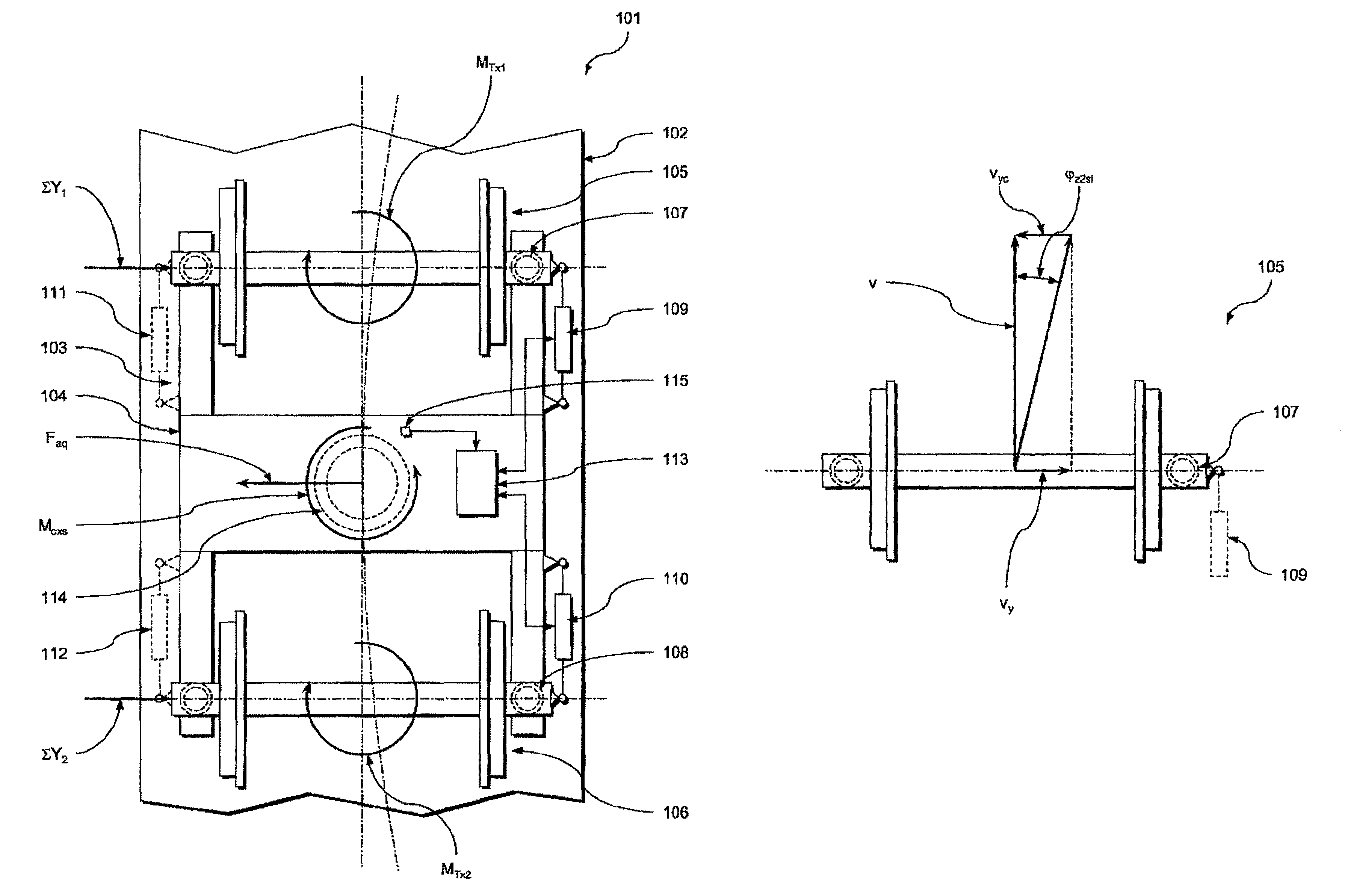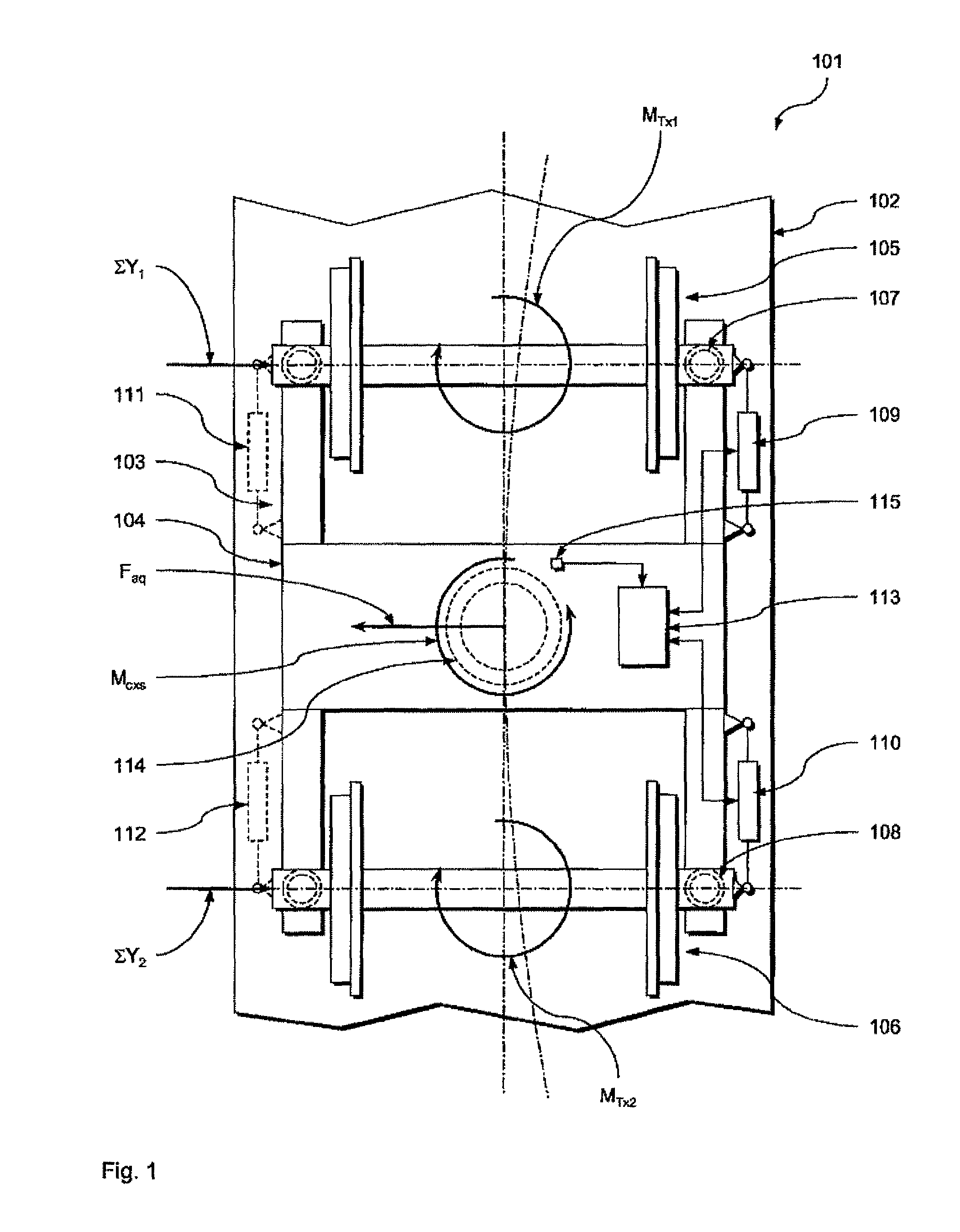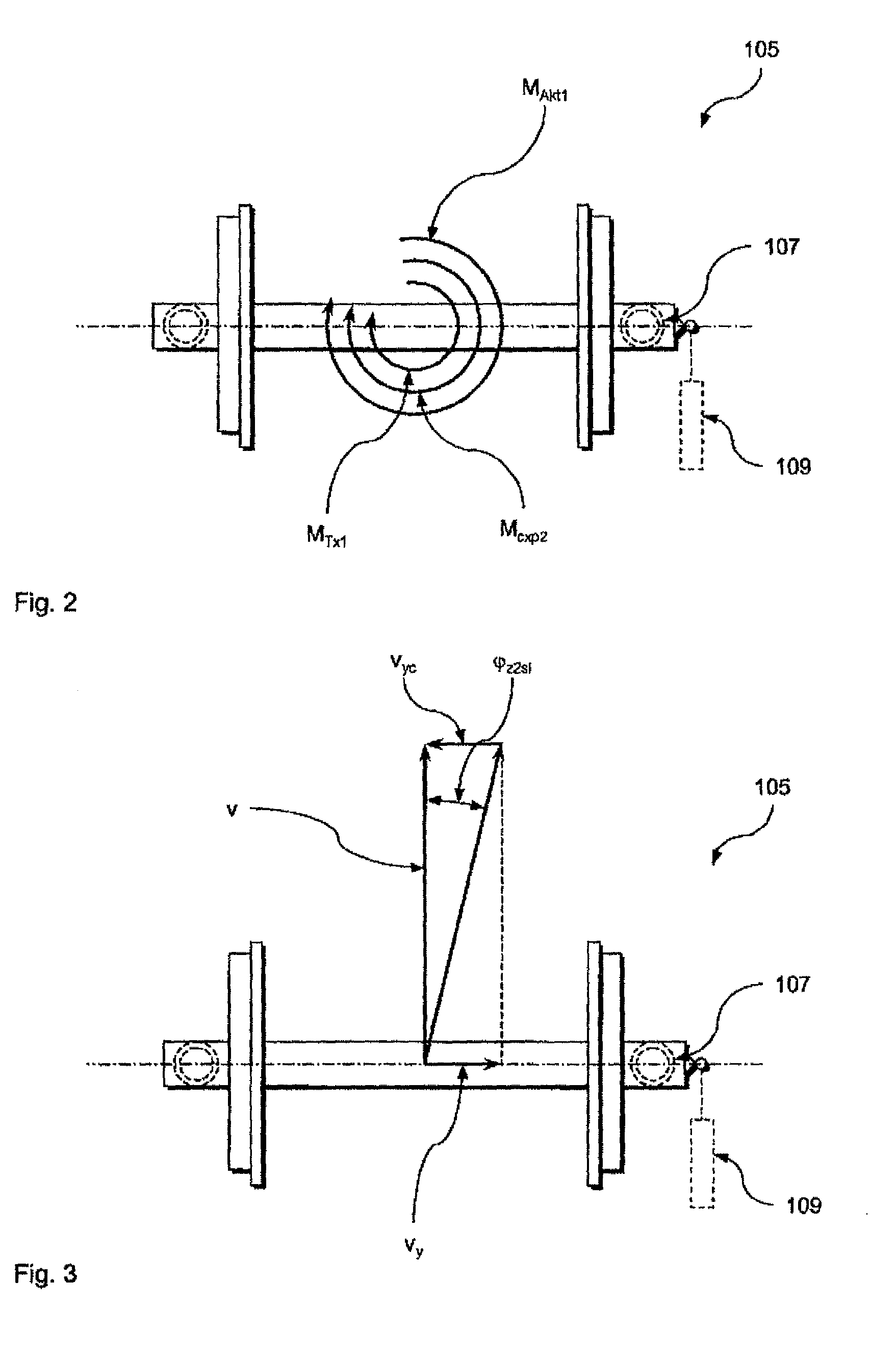Method for controlling an active running gear of a rail vehicle
a technology of active running gear and rail vehicle, which is applied in the direction of vessel construction, steering initiation, instruments, etc., can solve the problems of high-speed trains running gear in turn being not very curve friendly, passive solutions can always only reach a compromise between these two conflicting requirements, and achieves simple and reliable means , the effect of improving the wear behaviour of the wheels
- Summary
- Abstract
- Description
- Claims
- Application Information
AI Technical Summary
Benefits of technology
Problems solved by technology
Method used
Image
Examples
first exemplary embodiment
[0084]In a first preferred control variant according to the invention the curve negotiation control, i.e. adjustment of the turning angle of the first wheel set 105 in the first frequency range, is effected through the control unit 113 using a first target turning angle φz1s which corresponds to a first ideal target turning angle φz1si multiplied by a pre-defined first correction factor K1, i.e. the following applies:
φz1s=K1·φz1si. (11)
[0085]The first ideal target turning angle φz1si is selected such that, upon K1=1, i.e. the first target turning angle φz1s matching the first ideal target turning angle φz1si at the actual curvature of the track, the first wheel set 105 is adjusted curve-radially.
[0086]Furthermore control takes place such that the first actuator 109, in the first frequency range, momentarily essentially does not have to apply any turning moment, i.e. MAkt1=0 applies. As results from the moment balance according to equation (1), with the turning moments at the first ...
second exemplary embodiment
[0109]Thus, with a preferred second control variant, it is provided that although the turning angle of the first wheel set 105 is likewise adjusted in accordance with the above first control variant (i.e. MAkt1=0), the turning angle of the second wheel set 106 is adjusted in the first frequency range using a third target turning angle φz3s which corresponds to a third ideal target turning angle φz3si multiplied by a pre-defined third correction factor K3. The third ideal target turning angle φz3si is selected such that, where K3=1 applies, i.e. if the third target turning angle φz3s matches the third ideal target turning angle φz3si, the turning moment MTX1 on the first wheel set 105 resulting at the actual curvature of the track from the wheel rail pairing is inversely equal to the turning moment MTx2 on the second wheel unit resulting at the actual curvature of the track from the wheel rail pairing (i.e. MTx1=−MTx2).
[0110]From the above equations (3) to (6) the relations shown abo...
third exemplary embodiment
[0116]In a preferred third control variant the curve negotiation control, i.e. the adjustment of the turning angle of the first wheel set 105 in the first frequency range, is effected via the control unit 113 using a first target turning angle φz1s which in turn corresponds to the first ideal target turning angle φz1si multiplied by a pre-defined first correction factor K1, i.e. the following also applies here:
φs1s=K1·φz1si. (11)
[0117]In this case it is provided that the first actuator 109 is adjusted to follow, in the first frequency range, a turning movement of the first wheel unit caused by a change in the curvature of the track such that the first actuator 109, where K1=1 applies, i.e. where the first target turning angle φz1s matches the first ideal target turning angle θz1si at the actual curvature of the track, in the first frequency range momentarily applies a turning moment MAkt1 which is inversely equal to the turning moment Mcxp1 of the first primary spring mechanism 107...
PUM
 Login to View More
Login to View More Abstract
Description
Claims
Application Information
 Login to View More
Login to View More - R&D
- Intellectual Property
- Life Sciences
- Materials
- Tech Scout
- Unparalleled Data Quality
- Higher Quality Content
- 60% Fewer Hallucinations
Browse by: Latest US Patents, China's latest patents, Technical Efficacy Thesaurus, Application Domain, Technology Topic, Popular Technical Reports.
© 2025 PatSnap. All rights reserved.Legal|Privacy policy|Modern Slavery Act Transparency Statement|Sitemap|About US| Contact US: help@patsnap.com



